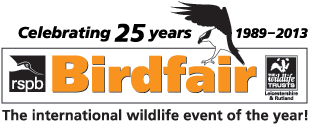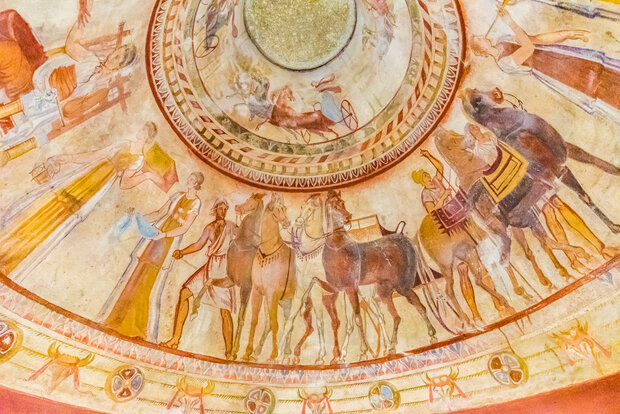 Kazanluk tomb © Pandion Wild Tours
Kazanluk tomb © Pandion Wild Tours
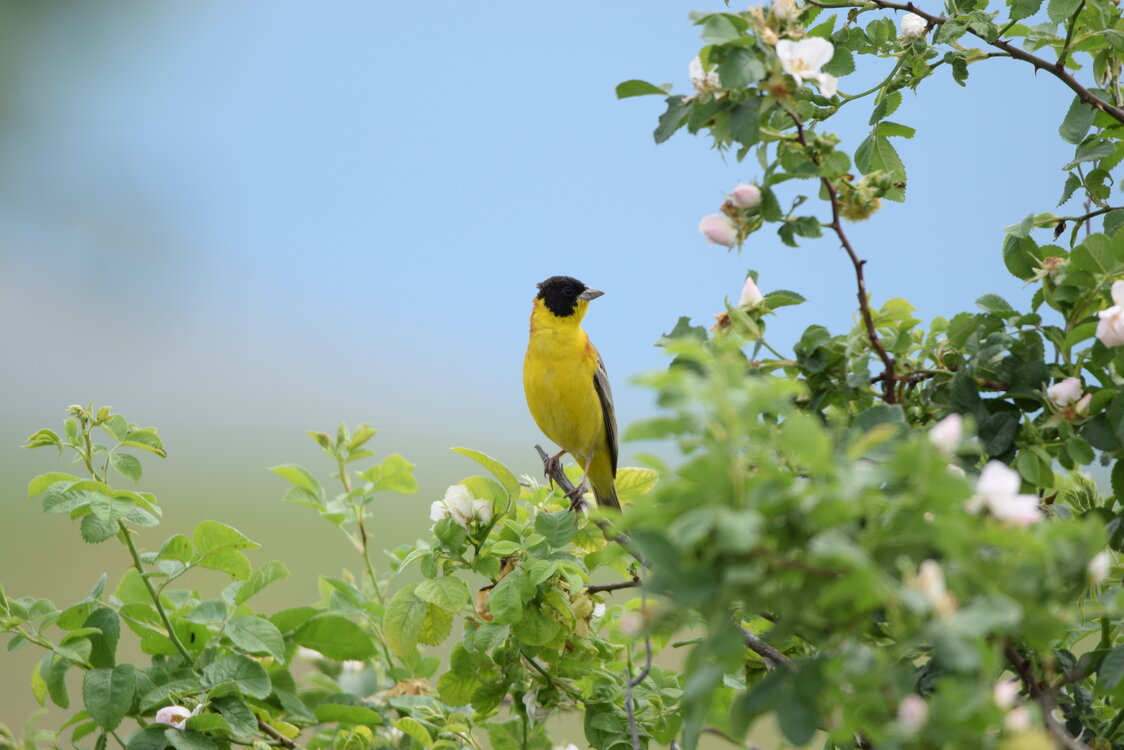 Black-headed bunting © Pandion Wild Tours
Black-headed bunting © Pandion Wild Tours
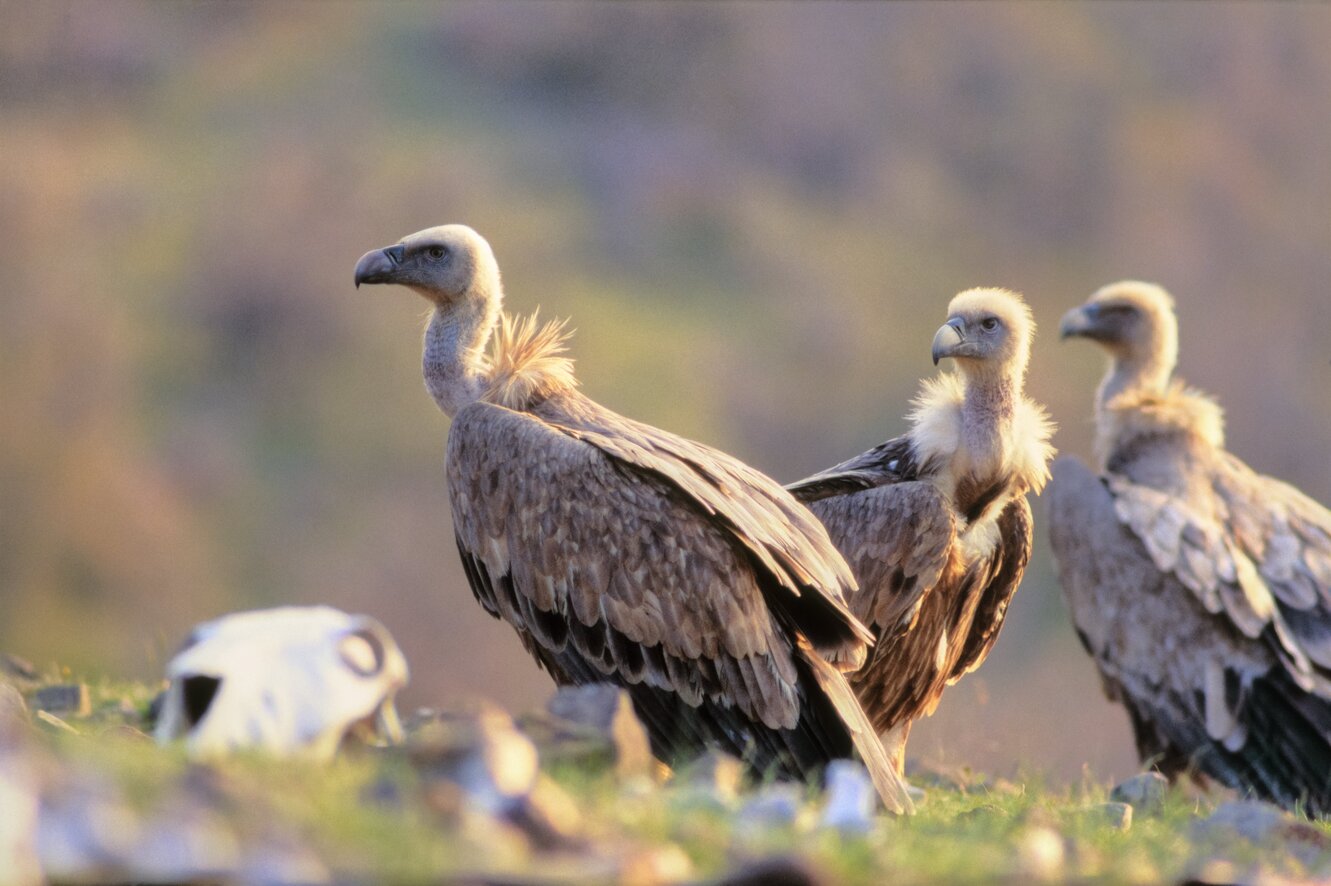 Griffon vultures © Pandion Wild Tours
Griffon vultures © Pandion Wild Tours
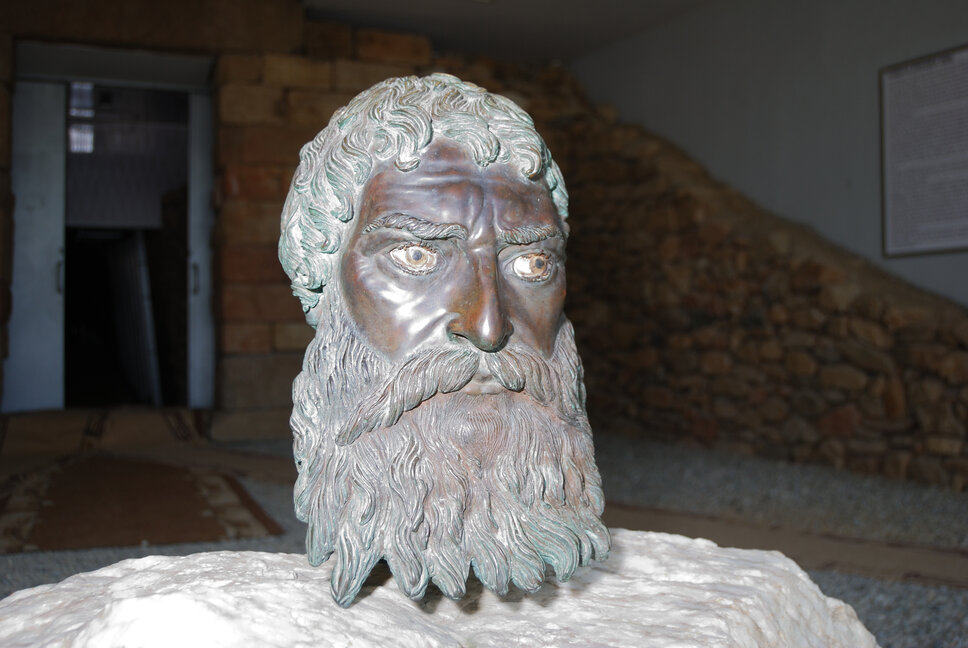 King Seuthes III © Pandion Wild Tours
King Seuthes III © Pandion Wild Tours
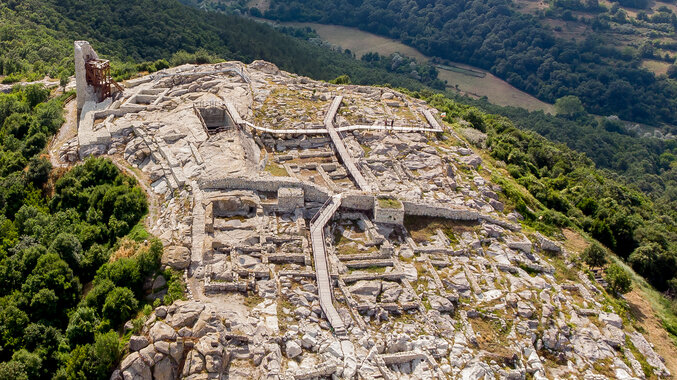 Thracian town Perperikon © Pandion Wild Tours
Thracian town Perperikon © Pandion Wild Tours
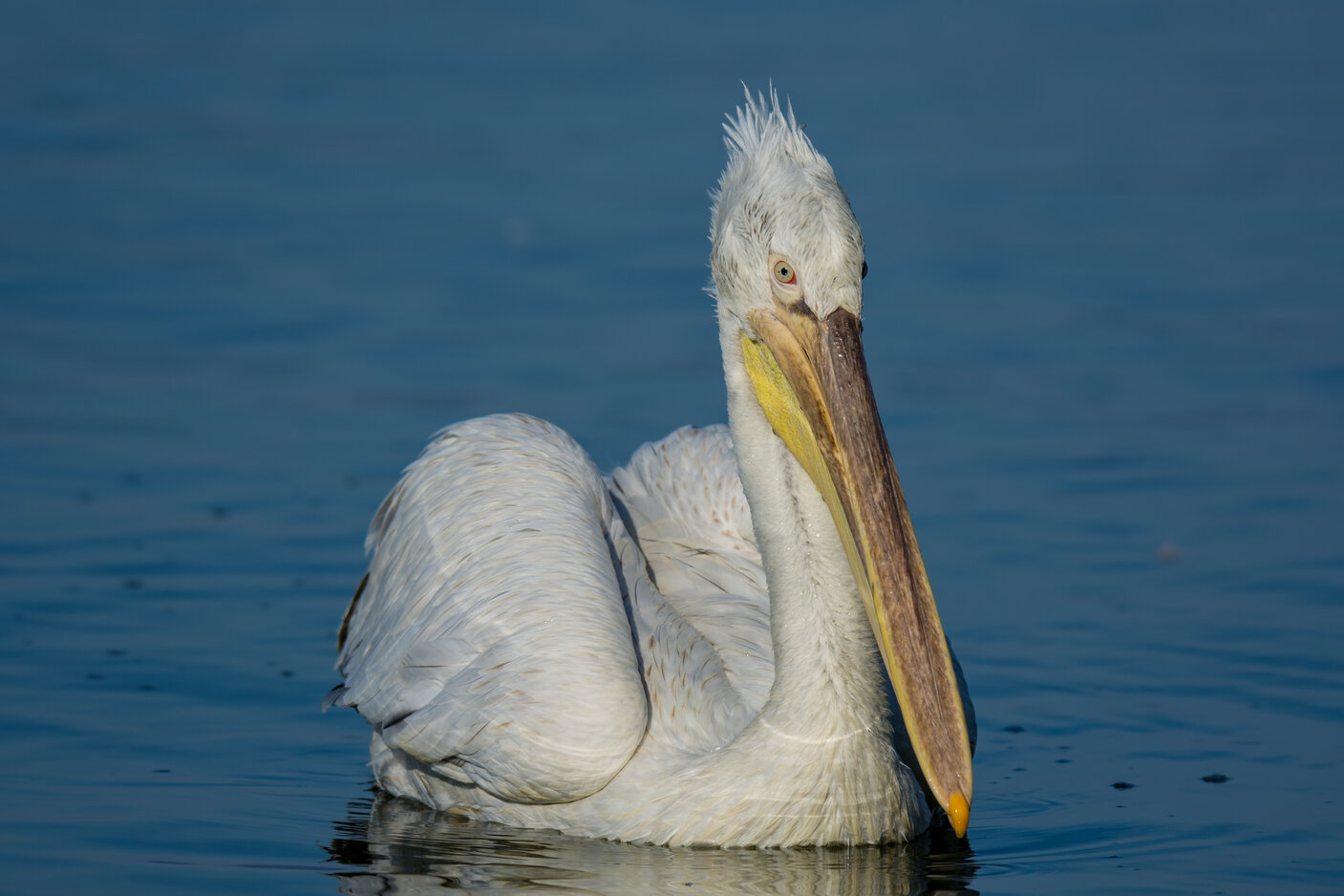 Dalmatian pelican © Pandion Wild Tours
Dalmatian pelican © Pandion Wild Tours
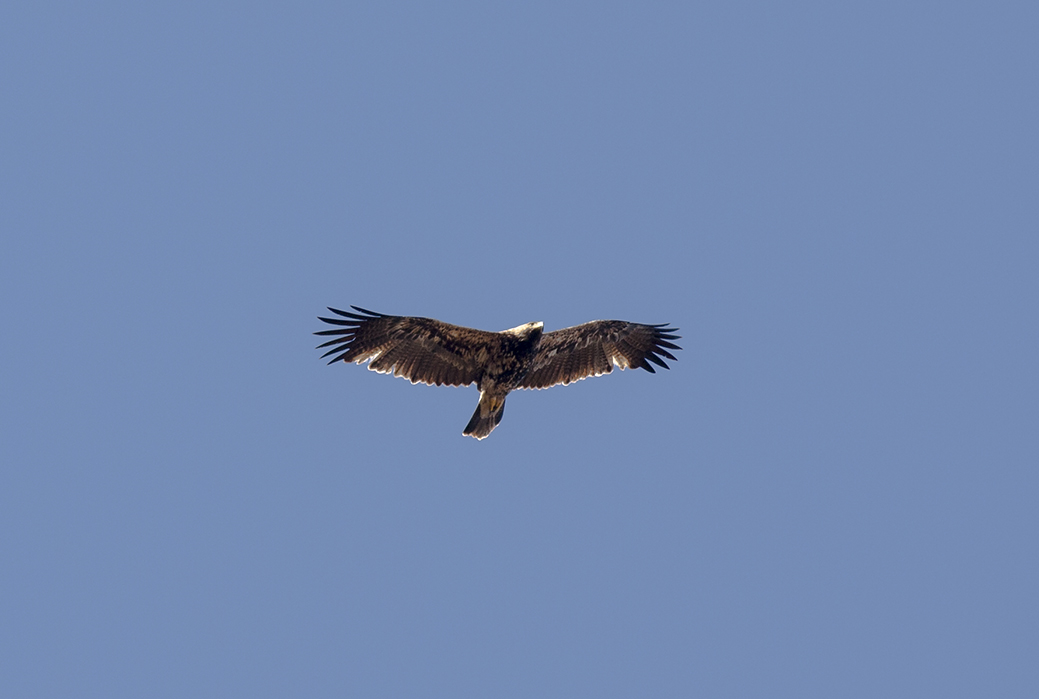 Eastern Imperial eagle © Pandion Wild Tours
Eastern Imperial eagle © Pandion Wild Tours
 Wallcreeper © Pandion Wild Tours
Wallcreeper © Pandion Wild Tours
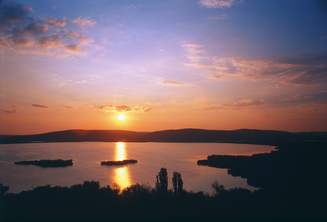 Sreburna lake reserve © Pandion Wild Tours
Sreburna lake reserve © Pandion Wild Tours
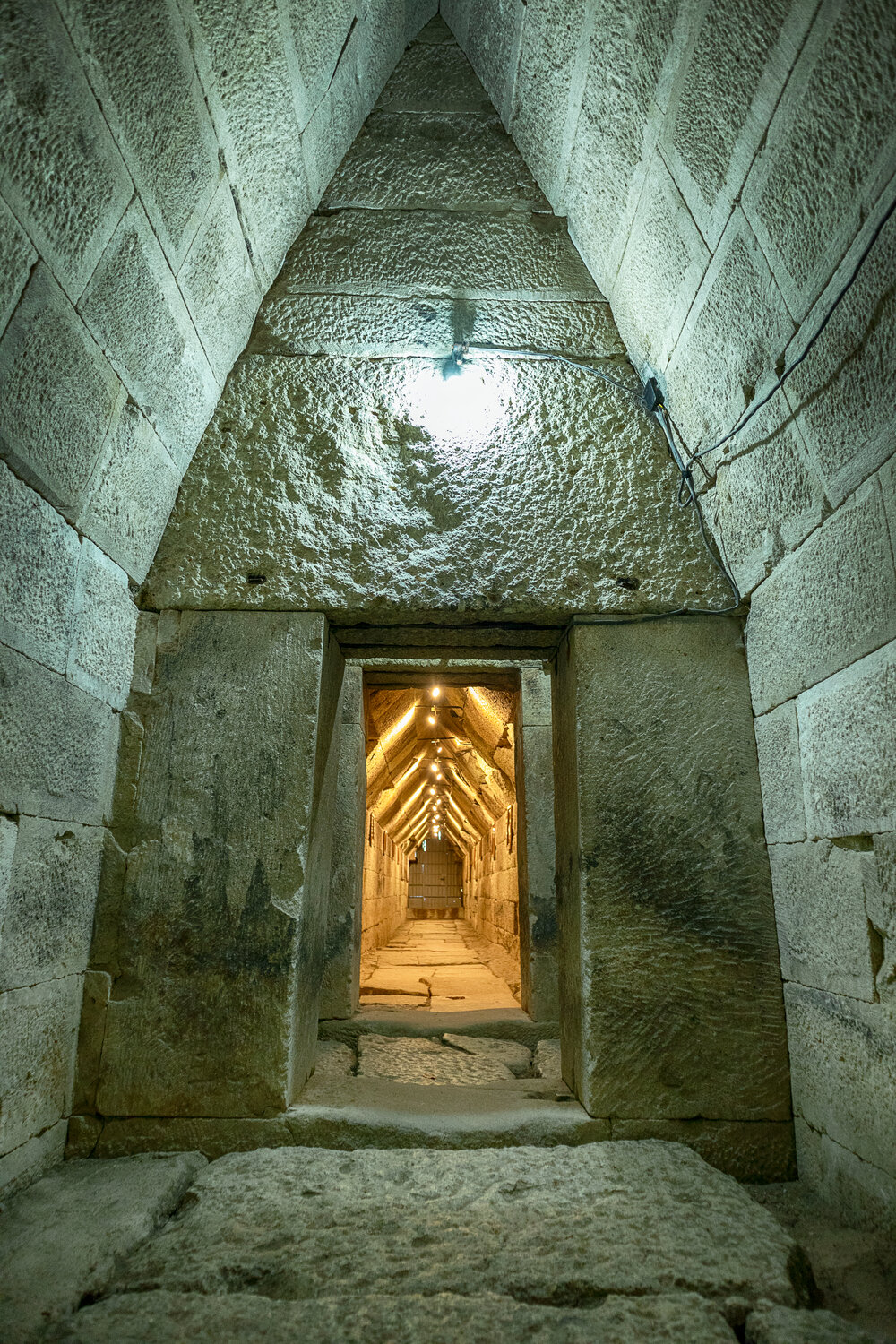 Mezek tomb © Pandion Wild Tours
Mezek tomb © Pandion Wild Tours
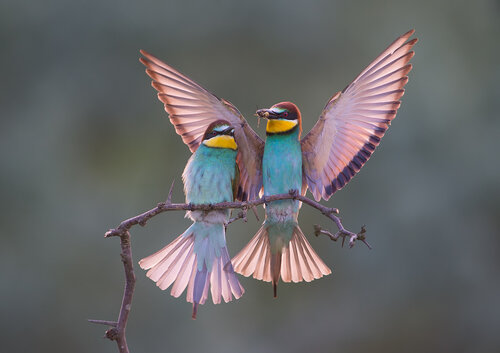 Bee-eaters © Pandion Wild Tours
Bee-eaters © Pandion Wild Tours
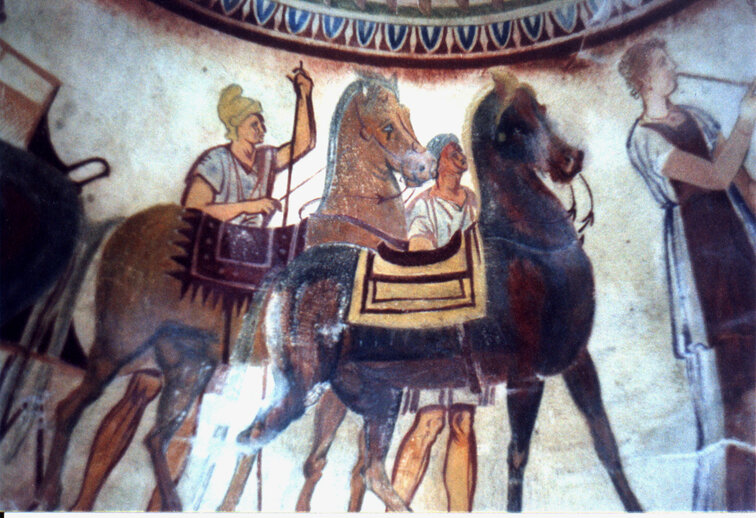 Kazanluk tomb © Pandion Wild Tours
Kazanluk tomb © Pandion Wild Tours
10 days
27 April 2025 -
06 May 2025
Day 1
Day 1 – Arrival at Sofia – National History Museum & Vitosha Mountain. Arrival at Sofia airport. Sofia became the capital of Bulgaria at 1879, but is a city with a very old and ancient history. Evidence has been found that Sofia was inhabited as early as 7000 years ago and remains well preserved, Thracian and Roman, can still be seen around the city. Under Thracian (and later Roman rule) Sofia was known as Serdika. During mid-6th century the Byzantines renamed it Triaditsa, and from the 9th century onwards (during the era of the First Bulgarian Kingdom) it took on the Slavonic name of Sredets. Our first historical sightseeing for the tour will start with the National History Museum. This is Bulgaria's largest museum, and it will take quite a time to explore all sections of it. We will focus on the exhibition from the End of the 6th Century BC to the 6th Century AD where we will become aware of the first strong Thracian Kingdom, known as the Odrysai. We will also visit the section with one of the most exquisite Thracian treasures. If time permits, we will visit Vitosha mountain for a short birding session. Vitosha is the first park in Bulgaria and on the Balkan Peninsula. It was declared a national park on 27th October 1934. During the seasons, one can observe approximately 200 bird species and about 120 of them are nesting birds Within the park there are 18 species listed in the Red Data Book for Bulgaria. One of the most typical inhabitants of the spruce forests are; Spotted Nutcracker, Ring Ouzel, Fire & Goldcrest, Woodpeckers, Scops Owl, Coal Tit and others. Overnight Sofia
Day 2
Day 2 – Transfer to Western Rhodopes & Trigrad Village. Today, there lies ahead of us an early start with a transfer to the small village of Trigrad, located in the very heart of the Rhodope Mountains. We will have several breaks to relax and rest whilst we have a look for representatives of the Bulgarian bird-fauna, namely Red-backed Shrike, Black-headed Bunting, White Stork, Honey Buzzard, etc. By early afternoon we will reach the stunning Trigrad Gorge. The first thing that hits you as you egress from the coach are the huge cliffs towering above and the deep rocky valley below - where we find the meandering Trigrad river, distantly below us. Strange trees of a local subspecies of Black Pine (Pinus nigra) grow right out of the rocks without any soil for their roots. Whilst we are there we cannot help but stand in awe before nature’s magnificent grandeur. Unfortunately, this is only a poor and sketchy description of this extraordinary place with its caverns and the rumble of its waterfalls. One can hardly imagine the gorge’s natural beauty if one does not see it with one's own eyes. The site is situated at an altitude of 1200 m asl. Here, we have an excellent chance of seeing the wonderful Wallcreeper, perhaps watching one flapping past like some enormous butterfly only to land on a rock face and begin to search the cracks and crevices for insects, incessantly flutterig its crimson, black and white wings. We should also expect to find Pallid Swift, Eurasian Crag Martin, Red-rumped Swallow, the perky White-throated Dipper, Black Redstart, Ring Ouzel and perhaps Spotted Nutcracker whilst in the gorge. The famous ‘Devils Throat Cave’ in Trigrad village is strongly connected with Thracian mythology. Since ancient times there have been tales of the legendary Thracian-Orpheus descending into the underworld (through this exact cave) to search for his beloved Euredice. At dusk we will be accommodated at a local hotel situated in a fabulous location in a quiet, peaceful and remote area. Overnight Trigrad village
Day 3
Day 3 - Transfer from Trigrad Village to Eastern Rhodopes. Today we continue to Krumovgrad town. We will pass through some magnificent mountain scenery on our way to Krumovgrad town for a two nights stay. The road snakes its way through the Rhodope Mountains following rushing, icy streams and beautiful forested valleys. As we drop in altitude, the coniferous forests give way to deciduous woodland that becomes more and more stunted until it finally gives way to the undulating, scrub-covered hillsides of the eastern Rhodope. The eastern part of the Rhodopes differs radically from the western part. It is of volcanic origin, with huge crags found as far as the eye can see. There are no large woodlands or forests here but stubby and sparse broad-leafed groves. Here, shrubs and grassy vegetation prevail. In terms of birding: the world of the larger birds of prey lies before us. During the transfer there will be some good opportunities to watch Black and White Storks, Spanish Sparrow, Lesser Grey Shrike, Red-rumped Swallow, and Scops Owl. Overnight Krumovgrad town.
Day 4
Day 4 – Krumovgrad Town– Birding & Ancient History. Today we will combine birding with a visit to some of our most prominent and mystical places, near Krumovgrad town, all related with Thracian civilization. Our first visit for the day is the interesting and rocky river valley of Dolna Kula, where we expect to see Black Stork, Black-headed Bunting, Ortolan Bunting, Eastern Black-eared Wheatear, Cirl Bunting, Rock Thrush and Blue Rock Thrush, Rock Nuthatch, Short-toed Eagle, Booted Eagle and if lucky; Chukar. Our next visit is in relation to with one of the most famous Thracians – Orpheus. Orpheus was famous for his musical skills, he played his lyre with such inspiration that even the wild beasts and trees were charmed by his music. Orpheus was named as the "father of songs”. The Thracian sanctuary, near Tatul Village (Momchilgrad Municipality) is connected with Orpheus. This is one of the most imposing megalithic monuments discovered within the territory of Bulgaria and it remains unparalleled with other Megaliths around the world. The sanctuary itself is a massive rock structure, and at its summit we find a truncated pyramid. It dates back to the end of the 5th and the beginning of the 4th centuries, BC. According to historians, the sarcophagus, the truncated pyramid and the side chamber illustrate the funerals of Orpheus and King Rhesus of Thrace, who according to mythologhy, reigned in the southern part of the Rhodopes and fought in the legendary Trojan War. The Thracians were a mysterious group of tribes who occupied the southeastern part of the Balkan Peninsula. The Thracians spoke an Indo-European language, but numerous theories about their appearance on the European cultural map and later extinction/assimilation, exist today. The most prominent theory indicates that the Thracians were the original inhabitants of this area. The ancient historian Herodot describes the Thracians as the most populous people, along with the Indians, and claims that if it were not for their constant in-fighting, the Thracians would have proved to be invincible when united. Our next stop is at the ancient town of Perperikon. The medieval archaeological complex Perperikon is one of the most ancient monumental megalithic structures, entirely carved into the rocks, and the only known city of the Thracians. The megalith village of Perperikon is dated at 8000 BC. During the Thracian civilization the town was probably a royal residence for the Thracian tribe, Bessie. It is believed that the world famous temple of Dionysius is located within the town. The latest archaeological research shows clearly that the temple was located exactly in Perperikon, and according to the legends, two crucial prophecies were made from the altar of this temple. The first one predicted great conquest of the world and glory for Alexander the Macedonian, and the second, made a several centuries later, predetermined the power and strength for the first Roman Emperor – Gaius Julius Caesar Augustus. Our last visit for the day is Studen Kladenets village. The village is a great opportunity for us to explore the Krumovica river valley. While White Storks nest here in traditional style on rooftops or on telegraph poles, the more uncommon Black Stork prefers cliff ledges, and the white-stained nest sites can be seen from great distances. We may also see them fishing in the river, running with half-opened wings to grab a fish in the manner of an egret. Chukars stand on prominent rocks and call loudly and Western Rock Nuthatches can be seen attending to their nests of caked mud, tailoring an appropriate fissure to suit. Other birds of particular interest include Syrian Woodpecker, Eastern Black-eared Wheatear, Eastern Olivaceous, Subalpine, Eastern Orphean and Barred Warblers, Sombre Tit, the lovely Masked Shrike (found here at the northern edge of its range), Lesser Grey Shrike and Black-headed Bunting. At night European Scops Owl can be heard in the village and we will do our very best to spotlight one. Perhaps the greatest attraction of the area is its three species of vultures: Eurasian Griffon Vultures, Egyptian Vultures & the rare and endangered Eurasian Black (or Cinereous) Vulture, which are doing exceptionally well here (unlike many other areas of Europe) due to organised feeding. Overnight Krumovgrad town
Day 5
Day 5 –Transfer to Kazanluk Town - The Valley of the Thracian Kings. Today we will make a journey to the impressive Valley of the Thracian Kings. Before we reach the town of Kazanluk we will include a couple most interesting visits. First, we will visit the Mezek Thracian tomb. The Mezek Thracian Tomb dates back to the 4th century BC. It is one of the most colossal Thracian tombs in Bulgaria and is preserved entirely in its original form. A large number of artifacts made of gold, bronze, iron, glass and ceramics, are exhibited in the museums of Sofia and Haskovo and were found during excavations of this tomb. We continue with a birding stop at Levka village to look for the majestic Eastern Imperial Eagle and to explore the dry, scrubby hillsides which are home to Isabelline Wheatear and the localised Olive-tree Warbler which, with its strong, dagger-like bill, is the largest of the Hippolais. Our last visit for the day, before heading to Kazanluk town, is the Thracian tomb of Aleksandrovo. The tomb dates from the 4th century B.C. The tomb was designed to give refuge to an unknown Thracian ruler, whose name remains a mystery. With its frescoes and architecture, this tomb is one of the masterpieces of Thracian cultural heritage in Bulgaria and ranks as one of the largest facilities of its kind found in the country to date. Late afternoon we arrive at the town of Kazanluk for two nights. Overnight Kazanluk town
Day 6
Day 6 – Kazanluk Town – Exploring the Valley of the Thracian Kings. Welcome to the impressive valley of the Thracian Kings. During the whole day we will discover the hidden secrets of the rich Thracian heritage! We will make a journey in the most impressive tombs in the valley where we will become aware of fascinating architecture, golden masks, bronze heads, ritual stone beds, geometric decorated roofs and world-famous frescoes. Without doubt, historians and archeologists consider the valley to be of significant importance, likened to that of the Egyptian Valley of Kings, near Luxor, as there are more than a thousand tombs of kings and members of the Thracian aristocracy to be found here. Several tombs have been excavated and restored to fine detail and we will visit the most significant of them: Thracian Tomb of Kazanlak, Golyama Kosmatka mound (tomb of King Seuthes III), Helvetia mound, Griffins Tomb, Svetitsata tomb and others. Our first visit will be the tomb of Kazanluk. This monument is the only one of its kind to be found anywhere in the world and is a UNESCO protected World Heritage Site, list since 1979. The Tomb owes its world fame to the unique frescos as they are one of the best-preserved frescoes of ancient Europe. The Tomb dates from around the end of the 4th century BC. Our next visit is the Golyama Kosmatka Mound where It is believed the funeral of Seuthes (the ruler of the Odrysian Kingdom ) took place. This is one of the biggest Thracian tombs and upon entering inside, the first thing that impresses you is a bronze-cast head which is believed to be the head of Seuthes III. Richly and intricately decorated, this is one of many masterpieces found in ancient Thracian art. We continue with Helvetia mound, Griffins tomb and Svetitsata tomb, all of which are equally worth the time to a visit. In Svetitzata tomb we find one of the symbols of the valley of the Thracian Kings, a golden mask known as the golden mask of King Teres. An impressive treasure made of 23-carat gold and weighing 673 grams. An interesting fact is that the mask may be a more significant find than the so-called Mask of Agamemnon, known as one of the most famous images of Greek antiquity. This due to the fact that The Mask of Agamemnon was made of gold foil and weighs only 60 grams, whilst this mask weighs 690 grams and cast in solid gold. We will finish the day with a short and pleasant birding walk in the area. Overnight Kazanluk town
Day 7
Day 7 – Transfer to Black-sea Coast – Pomorie Town. Today we head to the small Black-sea town of Pomorie. Before we reach the coast we will take time for a few more impressive archeological stops. Our first stop is at the Karanovo mound which is one of the largest in Bulgaria and where an amazing elaborately decorated 2000-year-old chariot, sheathed in bronze, was found. Archeologists believe it was the grave of a wealthy Thracian aristocrat because he was buried along with his belongings. Our last stop before we reach the town of Pomorie is the antique beehive tomb near the town. The tomb is another Thracian monument that is far from typical and is the only one of its kind on the Balkan Peninsula. The long corridor leads you to an impressive mushroom-shaped chamber covered in bricks. Archaeologists believe that the tomb was used as a mausoleum for a rich local family rather than as a resting place for a single person. We will finish the day with some birding at Pomorie salt pans, which are located right next to our hotel. Pomorie salt pans are a part of Burgas lake complex, which is one of the three most significant wetland complexes for congregations of waterfowl along the Bulgarian Black Sea coast. The area of Pomorie Lake and its adjacent territories support 204 bird species, 59 of which are listed in the Red Data Book for Bulgaria (1985). The lake is one of the most important sites in the country for breeding Avocet, Black-winged Stilt, Sandwich Tern, Little Tern, Common Tern and Kentish Plover. It is situated on the Via Pontica migration route and thus particularly important as a migratory stopover for considerable numbers of waders, divers, and grebes, etc. Overnight Pomorie town
Day 8
Day 8 – Exploring the Burgas Lakes (Ramsar and IBA sites) Today we will have a full birding day exploring the Burgas lake complex which is a bird rich area of significant European importance. The Bourgas lakes – “Mandra” and “Vaya or Burgas”, are Ramsar and IBA sites, with their extensive reed-beds on their lakesides. There are flooded meadows, marshes, low hills, and oak forests in the surrounding countryside. These diverse habitats make this region one of the best in Europe for wetland and other species of birds. Colonies of Pygmy Cormorants, Little Egrets, Purple Herons, Glossy Ibises and Eurasian Spoonbills are to be found in the reed beds of the Lakes, whilst Great Cormorants have taken advantage of the works of man, placing their untidy nests on the pylons that span Lake Burgas itself. This strange juxtaposition of man and nature is further heightened by the attractive black and white shapes of Great White Pelicans slowly flapping along against a partly urban backdrop. Over 500 pairs of Pied Avocets nest in the area and Mediterranean Gulls with their smart black heads and white eyelids, and Yellow-legged Gulls are often found to be numerous, and Gull-billed Terns lurk amongst the many Sandwich Terns encouraged to nest here by the construction of artificial islands. Black Terns, and sometimes White-winged Terns, dip gracefully over the waters From the reed beds, European Reed and Great Reed Warblers croak harshly, Savi’s Warblers produce their insect-like, reeling songs, Cetti’s Warblers give their loud, explosive outbursts and Bearded Reedlings ‘ping’ as they fly laboriously from one area to another. Nearby, Eurasian Penduline Tits will be found to be busy building their strange hanging ‘bottle-and-tube’ nests in the willows. Other species we expect to see around Burgas include; Great Crested Grebe, Little Bittern, Black-crowned Night Heron, Mute Swan, Ruddy and Common Shelducks, Gadwall, Garganey, Common Pochard, migrating European Honey Buzzards, the huge White-tailed Eagle, Lesser Spotted Eagle, Western Marsh Harrier, Common Moorhen, Common (or Eurasian) Coot, Black-winged Stilt, Kentish Plover, Northern Lapwing, Little Stint, Curlew Sandpiper, Little and Black-headed Gulls, Common and Little Terns, Sand Martin (or Bank Swallow), Great Spotted Woodpecker, Black-headed Wagtail, Song Thrush, Blackcap, Spotted Flycatcher, Long-tailed and Blue Tits, and Eurasian Nuthatch. Again, you can expect the list of possibilities to be endless. Overnight Pomorie town
Day 9
Day 9 – Tomb of Sveshtari & Transfer to Danube River Valley & Sreburna Lake Reserve. We will have an early morning start to the day as 300 km transfer is ahead us reaching our final destination, the Danube Valley and the mighty Danube River. During the day we will again combine some most interesting birding with archeology and history. On the way to Varna town we will have a short birding stop at a forest in a hilly area, which descends in rolling hills down to the very seashore. Here we cross the most Eastern part of the Balkan mountain. On the hills, on the upside of the road there are beautiful oak forests. Interesting birds to watch are: Great Spotted, Middle Spotted, Lesser Spotted, Green, Grey-headed and Black Woodpecker, Short-toed Tree creeper, Nuthatch and many more. On the way to the Danube valley we will pass through the biggest Bulgarian Black-sea town - Varna. One of the greatest sightseeing’s of Varna is the archeological museum of the town. The most attractive exposition in Varna Archaeological Museum (for both tourists and archeologists worldwide) is certainly the oldest golden treasure in the world dating back from 4,600 BC to 4,200 BC, it consists of about 2000 golden objects of 23,5 carat gold with the total weight of about 5.5 kg. Among the most amazing and interesting exponents is the golden scepter – a symbol of monarch’s power. It belonged to a Thracian ruler and was found in Necropolis, close to Varna Our next stop is the UNESCO World Heritage Site: the Thracian Tomb of Sveshtari. The tomb was built in the third century BC to house the remains of none other than Dromichaetes, a powerful Thracian king who defeated Alexander the Great’s successor, Lysimachus, in battle. The 3rd-century BC Thracian tomb has a unique architectural decor, with polychrome half-human, half-plant caryatids and painted murals. We continue further for our last visit of the day to another UNESCO site - Lake Srebârna in the Danube Valley, a locality known in the nineteenth century as the ‘Eldorado of wading birds’. The main purpose of our visit here is to see the famous colony of the endangered Dalmatian Pelican that lies deep in the extensive reedbeds surrounding the lake. Other possible species: Ferruginous duck, Pygmy cormorant and a number of other more or lesser rare birds such as; Red-necked and Black-necked Grebes, Purple, Squacco and Night Herons, Marsh Harrier, Penduline Tit , Lesser Spotted Eagle, Levant Sparrowhawk, Goshawk, and Ruddy Shellduck. For our last night we will be accommodated within a quaint small village, in a lodge fully restored to the traditional historical architecture found typical of the region. The Golden Jackal is an animal found to be widely spread across the area and it is common to hear it, or even if lucky, to see it - near to the lodge where we will be staying. Overnight Vetren village
Day 10
Day 10 – Transfer to Bucharest and Departure We will cross the Danube river by ferry on our way to Bucharest for our departure flight.
10 days
27 April 2025 -
06 May 2025
Bulgaria is one of the most ancient European countries. Most contemporary historians date the establishment of the First Bulgarian state at 165 AD. It has a very rich and interesting history and culture, and at the same time it is one of the few countries in Europe with very well-protected nature and wildlife. Contemporary Bulgarians are direct descendants of ancient Thracians, who, judging by all known evidence, were the aboriginal population of the Balkan Peninsula. And it is a well-known fact that the Thracians founded the oldest European civilization. Moreover, a case can be made that it was also the world's oldest civilization, since the people inhabiting Anatolia and the Fertile Crescent had a common origin with the ancient Thracians. In today’s Bulgaria archaeologists have found remains of Thracian cities and tombs dating to prior; 5000 BC. Goldsmiths’ workshops have also been dated to be of the same era. Not only that, but the oldest worked gold was found within the boundaries of today's Bulgaria. The gold artifacts found at the Varna Necropolis were dated at 4500-5000 BC. All these facts plainly confirm that European civilization originated on today’s Balkan Peninsula and, more specifically, within the borders of today’s Bulgaria. During this tour we will visit ancient places, tombs and shrines, ancient cities where we will become more familiar with one of the most ancient civilizations of the known world – The Thracians. Thracian culture has left us with more than 60,000 larger and smaller tombs in the Bulgarian lands, numerous cities and religious sanctuaries, and one of the finest golden treasures ever discovered. Some of the most prominent are situated in the famous valley of the Thracian Kings which is an equivalent of the Egyptian Valley of Kings, near Luxor. We will also visit other ancient places situated in the Eastern part of the Rhodope Mountains which were considered a holy place by leaders of the Thracians. Apart from a most vibrant history Bulgaria (with its rich biodiversity), is indeed a unique land. Within its borders and during certain periods of the year, one can watch at one and the same time both Mediterranean species of birds, and also others that nest in distant Siberia. We will visit many marshes and lakes, the riversides of the majestic river Danube, and the ancient Black Sea. We can likely expect to see over,170-200 species of birds. Some of the tours highlight species can include; the beautiful looking Golden Oriole, Bee-Eater, Roller, Hoopoe, and Wallcreeper, and other rare European species such as - Pygmy Cormorant, Ruddy Shelduck, Ferruginous Duck, many species of Waders and Plovers, Black- and White-winged Terns. Also, large birds of prey as the Golden Eagle, Eastern Imperial Eagle, Spotted Eagle, Short-toed Eagle, Booted Eagle, White-tailed Sea Eagle, Long-legged Buzzard, Honey Buzzard, Levant Sparrowhawk, Masked Shrike, Sombre Tit, Isabeline- and Pied Wheatears, Olive-tree Warblers, Semicollared Flycatcher, Balkan-, Black-headed-, Yellow Wagtails amongst many more. As you see the list can prove quite endless. Our tour will be a perfect combination of both stunning nature and ancient history, and amongst all of this we will also enjoy delicious Bulgarian cuisine and wines.
Languages
English
Group size
5 - 12
Individual tour
2 - 4
Weather
Daily temperatures are almost always above 18C. Rainfalls possible, but as a whole it is a fair, sunny and steady weather. Depressions occur very rarely and then temperatures fall down to 8-10C.
Clothing
Suitable for the prevailing weather conditions: pullovers and trousers, raincoats, gloves and caps; it might prove we will also need sunglasses. Good shoes, stable and convenient for walking are also very important.
Walking
Easy walks of 2 to 4 km per day.
available27 April 2025 - 06 May 2025
Land only price
€1,650.00
Single room supplement
€150.00
Deposit
€150.00
Individuals
€1,850.00
Additional price info
Payment may be made in all convertible currencies at the Euro exchange rate for the day of payment. The prices include : All the ground transport, FB – full board with packed lunches, where is necessary, accommodation in hotels and guest houses. English speaking guide, All the taxes for reserves & other entrance fees. The prices don’t include : Insurance, drinks, and all the items of personal nature



